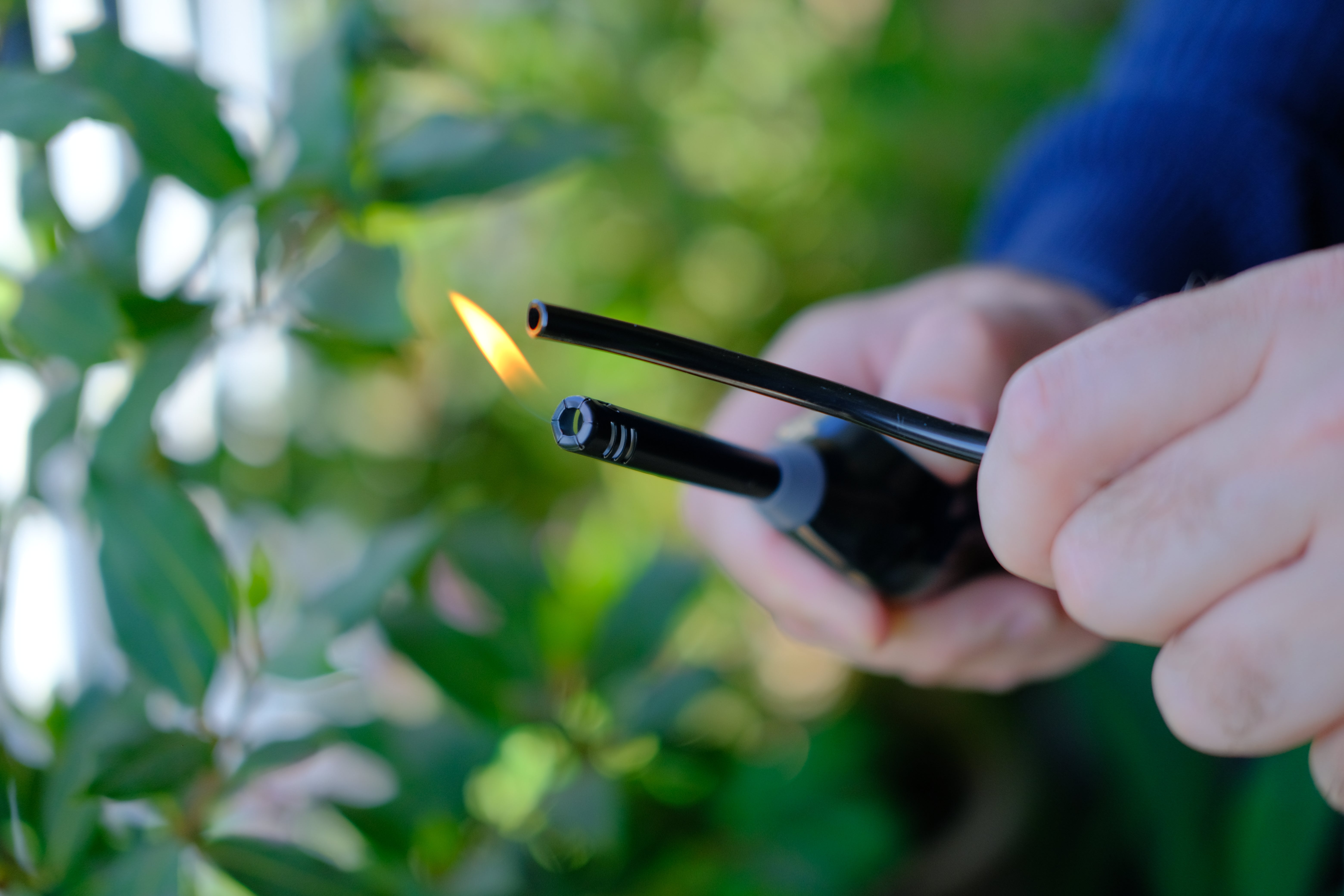
In the world of gardening, we often focus on the big picture: soil quality, sunlight, and fertilizer. Yet, the most crucial element—water—is often delivered inefficiently. While main drip lines (1/2-inch or 3/4-inch) handle the heavy lifting, true watering mastery comes down to the smallest component in your system: the 1/4-inch drip irrigation tubing.
This flexible, narrow line is not just an accessory; it is the capillary system of your garden, allowing you to move beyond generalized watering and adopt an approach of surgical precision. For those cultivating in containers, window boxes, or meticulously planned raised beds, this small hose is your most valuable asset.
The Precision Advantage: Why Go Small?
The primary purpose of 1/4-inch (or micro) tubing is to act as the final, targeted delivery method. It connects the main distribution line to the individual emitter, stake, or micro-sprayer.
Here’s why its smaller diameter is critical for modern, efficient gardening:
- Flexibility and Routing: Unlike larger, rigid lines, 1/4-inch tubing can be easily bent, wrapped around corners, and inconspicuously tucked away. This is essential for navigating the tight, varied topography of potted arrangements or closely planted raised beds.
- Minimized Waste: By restricting the flow area, this tubing helps ensure that every drop of water that leaves the main line is directed exactly where it needs to be: the plant's root zone.
- Aesthetic Discretion: In decorative container gardens, bulkier hoses can detract from the beauty of the plants. The slim profile of 1/4-inch tubing remains virtually invisible, keeping the focus on your thriving greenery.
Compatibility at a Glance (Carpathen)
| Mainline Family | Mainline Size | How to Branch to 1/4" | Do Not |
|---|---|---|---|
| Push-to-Connect | 1/2" (0.50" ID / 0.70" OD vinyl) | Use the matching 1/4" push-to-connect take-off/adapter for this family; then continue with 1/4" barbed emitter/stake. | Do not pierce the vinyl tube; do not use threaded/barbed into the wall. |
| Threaded | 5/16" (0.30" ID / 0.42" OD vinyl) | Use the matching 5/16" threaded take-off/adapter to 1/4"; then continue with 1/4" barbed emitter/stake. | Do not pierce; not push-to-connect; not barbed directly into the wall. |
| General market poly mainlines | 3/4" or 1/2" LDPE (pierceable) | Use a clean punch and compatible 1/4" barbed take-off with grommet—only if your mainline is designed for piercing. | Don’t pierce vinyl families above. |
Quick Start Guide: Connecting and Extending Your 1/4-Inch Lines

Installing your micro-tubing is simple and requires only a few tools.
Step 1: Prep the Tubing (The Warm Soak Trick)
Never try to unroll or cut cold tubing. A simple trick is to uncoil the tubing and let it sit in the sun or soak it in warm water for about 15 minutes. This softens the material, making it incredibly easy to work with and ensuring a tighter, more secure connection when inserting barbed or push-to-connect fittings.
Alternatively, you can briefly warm the tip with a lighter for 2–3 seconds—just enough to soften it, not melt it. This makes it much easier to slip onto barbed fittings or push-to-connect ends and ensures a tighter, leak-free seal.
Step 2: Connect to the Main Line
Carpathen users: Select the correct take-off for your family—1/2" push-to-connect or 5/16" threaded—and attach your 1/4" line to that adapter. Do not pierce Carpathen vinyl mainlines.
Using a pierceable poly mainline? If your backbone is LDPE designed for punching, use a standard punch tool and insert a compatible 1/4" barbed take-off with grommet.
Step 3: Run the Line and Attach Emitters
Cut the 1/4-inch tubing to the length needed to reach your container or plant base. Attach it securely to the take-off. At the other end, attach your chosen emitter, micro-sprayer, or drip stake. Remember to leave a small, loose loop in the tubing—the "stress loop"—to prevent the line from pulling taut and disconnecting as the soil settles or temperatures fluctuate. Keep individual 1/4" runs short—ideally ≤ ~10 ft (up to ~15 ft max).
Step 4: Secure the Delivery Point
Use tubing stakes or anchor weights to hold the 1/4-inch line and the emitter securely next to the plant. This prevents the line from being displaced by wind, pets, or gravity, ensuring consistent water delivery right to the root zone.
The Secret to Longevity: Quality and Maintenance

The performance of your hyper-precise system hinges entirely on the quality of the tubing itself. High-performance, professional-grade tubing must possess three key traits:
- UV Resistance: It must withstand constant sun exposure without cracking or degrading over time. High-quality black, UV-resistant 1/4-inch tubing is vital for longevity.
- Flexibility & Compatibility: The material needs to be pliable for easy installation but consistent enough to hold a perfect seal with fittings.
When selecting materials, look for options that ensure a tight, reliable connection every time. For broad compatibility, we recommend the Carpathen 1/4-inch vinyl (0.16" ID / 0.28" OD) in 100 ft or 200ft rolls. It is engineered to lock securely onto 1/4" barbed emitters and to mate cleanly via the correct family take-offs (use 5/16" threaded take-offs for Carpathen 5/16" mainlines, or standard 1/4" barbed take-offs on pierceable poly).
Out-of-the-Box Uses: Beyond the Garden
Think of 1/4-inch tubing not just as a gardening accessory, but as a universal solution for low-flow water transport.
Small-Scale Liquid Feeding (Fertigation): Use 1/4-inch lines to create a small-scale fertigation system. You can precisely adjust the delivery of micro-doses of liquid fertilizer directly to individual plant roots, ensuring maximum uptake and reducing nutrient runoff. Use a filter and a pressure regulator for consistent dosing.
Patio and Greenhouse Misting Systems: 1/4-inch tubing is the ideal component for assembling patio or small greenhouse misting systems. The low flow rate and manageable pressure make this line perfect for fogging nozzles that reduce ambient temperature on hot days, helping your plants prevent heat stress.
Comparative Chart: 1/4-Inch Tubing vs. Classic Methods
To fully appreciate the value of 1/4-inch tubing, here’s how its control and efficiency stack up against other common watering methods. Green indicates high performance, while Red indicates low performance or high risk.
Comparative Chart: 1/4-Inch Tubing vs. Classic Methods
To fully appreciate the value of 1/4-inch tubing, here’s how its control and efficiency stack up against other common watering methods. Green indicates high performance, yellow is moderate, and red signals lower efficiency or higher risk.
| Watering Method | Water Control Level | Suitability for Containers/Rows | Evaporation/Runoff Risk | Precision Level |
|---|---|---|---|---|
| 1/4-Inch Tubing + Emitters | Direct root control | Pinpoint delivery | Water penetrates immediately | High precision |
| Hose Watering (Manual) | Varies by operator | Risk of plant damage/soil compaction | Surface watering | Limited accuracy |
| Large Sprinklers | Waters everything | Not targeted | Wind, foliage interception, evaporation | Low control |
| 1/2-Inch Tubing (Holes only) | Water seepage | For long, straight rows | Surface runoff possible | Low accuracy |
FAQ: Your Questions Answered About 1/4-Inch Tubing
A: Because of friction loss, keep individual 1/4" feeder lines ideally ≤ ~10 ft. You can stretch to about 15 ft in simple layouts, but longer runs will starve the tail emitters. If plants are farther away, run your mainline closer and branch off again.
A: Yes. All drip systems should run through a pressure regulator (commonly 25 PSI). Excess pressure can pop 1/4" lines off fittings or cause emitters to overshoot their rated flow.
A: Micro-tubing and emitters are sensitive to fine sediment. Install a quality mesh filter before the regulator, and seasonally flush lines by opening end caps or removing emitters briefly.
A: Match the family: use a 1/4" push-to-connect take-off with Carpathen 1/2" push-to-connect mainlines, or a 5/16" threaded take-off with Carpathen 5/16" threaded mainlines. Then continue in 1/4" barbed to your emitter. Do not pierce Carpathen vinyl mainlines.
Conclusion

The jump from broad watering to precise, localized delivery is perhaps the most significant upgrade you can make to your gardening efforts. By leveraging the versatility and pinpoint accuracy of 1/4-inch drip tubing, you stop wasting water on weeds and unused soil, and instead, invest every drop directly into the health of your plants.
The difference between a good harvest and a perfect one often lies in the details. Choose precision, choose quality, and watch your garden thrive.



